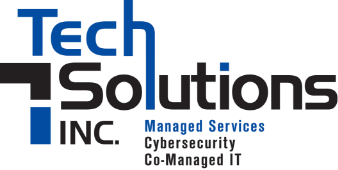
New technologies are reshaping healthcare at a rapid pace, changing how patient care is delivered and how IT systems operate behind the scenes. Over the course of 2026, these innovations are expected to improve patient outcomes and ignite new growth across the business side of the industry. In this article, we’ll examine these emerging technologies and why business leaders should be watching closely.
Virtual hospitals
A virtual hospital is an online system that lets patients receive medical care without traveling to a physical facility. Doctors and nurses can use video calls, health-tracking devices, and secure digital tools to provide checkups, ongoing care, and other medical services. Because medical care teams can connect across different locations, patients — especially those in rural or underserved communities — gain easier and more consistent access to healthcare.
What this means for businesses
Remote care is becoming a routine part of healthcare delivery, creating a strong demand for companies that build telehealth platforms, monitoring tools, and the technology behind them. Virtual hospitals give healthcare organizations a practical way to reach more patients and expand services without adding new buildings or clinical space.
AI agents
AI (artificial intelligence) agents are digital assistants that can review patient information in real time, suggest next steps in care, and keep track of treatment progress. Letting AI agents handle these routine duties eases the burden on staff and gives clinical teams more time to focus on direct patient care.
What this means for businesses
Staffing shortages and rising administrative demands are driving healthcare organizations to seek reliable digital solutions. In response, AI companies are developing tools designed to help healthcare providers handle growing workloads and boost efficiency.
AI for early medical diagnosis
AI-powered diagnostic tools help clinicians detect cancer, heart disease, and neurological conditions at an earlier stage. They analyze medical images, lab results, and patient records to quickly and consistently identify patterns indicative of emerging health issues.
What this means for businesses
With healthcare providers increasingly prioritizing early detection, the demand for supportive AI tools is on the rise. Diagnostic AI companies are poised to play a crucial role, empowering healthcare organizations to enhance accuracy, expedite interventions, and advance preventive care.
Generative AI in drug discovery
Generative AI speeds up drug discovery by creating computer simulations that show how different chemical compounds might behave in the human body. Instead of running countless experiments in a lab, researchers can use AI models to highlight the most promising drug candidates earlier in the process.
What this means for businesses
As interest in generative AI grows among biotech and pharmaceutical companies, AI developers have a clear path for expansion. For these organizations, generative AI offers a way to accelerate treatment development and reduce costs associated with repetitive lab experiments.
Robotics
Robotics in healthcare covers a wide range of helpful tools and machines. For example, robotic arms give surgeons greater control during minimally invasive procedures, while mobile robots move medications, supplies, or even patients in hospitals. These technologies ease the physical workload for staff and help maintain steady, reliable care throughout a facility.
What this means for businesses
As labor shortages continue to challenge healthcare systems, the demand for robotic solutions will probably increase. That means companies specializing in surgical robotics, hospital automation, and caregiving support are poised to meet a clear and urgent need.
CRISPR and AI
Clustered Regularly Interspaced Short Palindromic Repeats (CRISPR) is a gene-editing tool that allows scientists to make precise modifications to DNA, similar to editing text on a page. Combining CRISPR with AI gives researchers a clearer picture of how genetic changes might behave, helping them design treatments that fit a person’s unique genetic makeup.
What this means for businesses
Demand for personalized medicine is growing, creating meaningful opportunities for companies working with CRISPR and AI. Businesses that invest in these technologies can contribute to new therapies for genetic disorders, cancer, and other complex conditions.
Synthetic health data
Synthetic health data is computer-generated medical information that looks and behaves like real patient data but doesn’t include any personal details. AI systems learn from real medical records and then create new, artificial examples that researchers can use to test medicines, train software, and improve diagnostic tools without using sensitive information.
What this means for businesses
Using real patient data for research presents legal and logistical challenges. That complexity has created a growing demand for safe, accessible research data, leading to opportunities for companies offering synthetic datasets.
The latest innovations in healthcare technology represent opportunities for both healthcare providers and the businesses that support them. If you need help staying on top and adopting the latest technologies, contact us today. We’re here to help.

